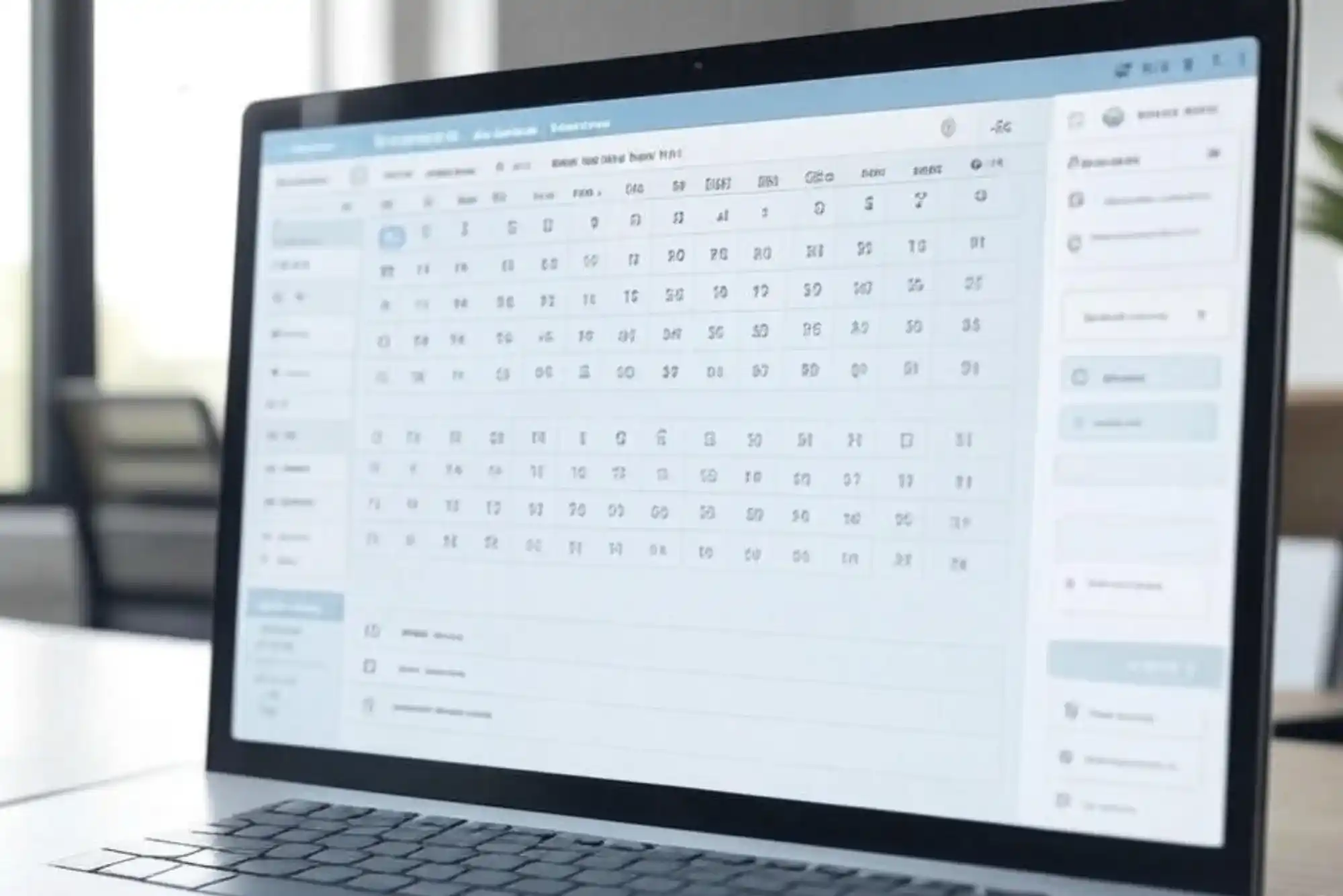Over the past decade, I’ve worked closely with a variety of Customer Relationship Management (CRM) systems—ranging from massive enterprise solutions to nimble, startup-friendly platforms. If there’s one question I hear time and again from both clients and colleagues, it’s this: Can CRM tools really handle scheduling tasks effectively, or do I still need a separate scheduling app?
It’s a fair question. After all, scheduling is essential to just about every business function—from sales calls and follow-ups to internal meetings and project milestones. The good news is that modern CRM tools have come a long way. Many now offer integrated scheduling features that rival standalone software, and some go a step further by automating time-based tasks and syncing seamlessly with external calendars.
Let’s unpack how CRM and scheduling software intersect, what that looks like in real-world scenarios, and whether it makes sense for your business to rely on a CRM for scheduling.
CRM Tools Are More Than Just Contact Databases
When most people think about CRMs, they think of them as glorified Rolodexes—tools for storing customer names, emails, phone numbers, and maybe a few notes. But that’s an outdated view. Today’s CRM tools are powerful business platforms that manage the entire customer lifecycle, from lead capture to post-sale support.
Scheduling, as it turns out, plays a central role in that lifecycle. Whether you’re coordinating meetings, setting up automated email reminders, or managing your sales team’s daily tasks, scheduling is deeply woven into how you interact with customers. And that’s why modern CRM platforms have evolved to include native scheduling features or robust integrations with popular calendar tools like Google Calendar, Outlook, and Microsoft Teams.
How CRM and Scheduling Software Work Together
One of the most impressive developments I’ve seen recently is the tight integration between CRM and scheduling software. Some CRMs have built-in scheduling modules, while others rely on integrations with third-party apps like Calendly, Acuity Scheduling, or HubSpot Meetings. These connections allow users to:
-
Book appointments directly within the CRM interface.
-
Share booking links that automatically sync with both the CRM and a user’s calendar.
-
Set reminders, alerts, and follow-up tasks based on scheduled events.
-
Track meeting history and attendance for individual contacts.
For instance, I worked with a mid-sized marketing agency last year that switched from using separate tools for CRM and scheduling to a combined setup using Zoho CRM. Their team was juggling sales meetings, onboarding sessions, and internal strategy calls, often leading to double-booking and confusion. Once they integrated their scheduling needs into the CRM, productivity shot up. They could now view client availability, book meetings instantly, and trigger automatic follow-ups after a call—all without switching between tools.
Built-in Scheduling Capabilities in Popular CRMs
Some of the most popular CRMs have made scheduling a priority. Let’s take a look at how a few of them stack up:
HubSpot CRM has a Meetings tool that integrates beautifully with your calendar. You can create booking pages, allow clients to schedule time with your team, and log those meetings back into the CRM for future reference. What makes this particularly powerful is that follow-up emails and task reminders can be automated based on scheduled events.
Salesforce, on the other hand, offers robust scheduling features through integrations with tools like Salesforce Scheduler or third-party calendar apps. For businesses with complex needs, such as assigning the right team member based on skill set or availability, Salesforce provides a level of customization that’s hard to beat.
Zoho CRM offers native calendar and appointment scheduling, as well as workflows triggered by time-based actions. I especially appreciate the tight link between Zoho CRM and Zoho Bookings, which makes it easy for customers to schedule consultations or demos while giving your team visibility into each interaction.
Pipedrive, known for its visual sales pipeline, includes activity scheduling as part of its core offering. It’s perfect for sales reps who need to log calls, plan follow-ups, and keep their schedules organized without opening a separate tool.
When a Standalone Scheduler Still Makes Sense
Despite how far CRMs have come, there are still times when standalone scheduling software might make more sense—especially if your business relies heavily on complex scheduling patterns. For example, medical offices, law firms, or wellness centers often need more granular control over booking slots, cancellation policies, and multi-provider availability. In these cases, a dedicated scheduling app integrated with a CRM might be the best of both worlds.
Let me give you a real example. A dental clinic I consulted for used Salesforce as their CRM but leaned heavily on a separate scheduling platform designed specifically for healthcare. The integration was seamless thanks to a custom API setup, and the team benefited from Salesforce’s automation without sacrificing the specialized scheduling features they needed—like buffer times between appointments or handling multiple practitioners.
Automation and Workflow Triggers: The Hidden Scheduling Superpower
Another area where CRM tools shine is automation. Scheduling is not just about time slots—it’s also about what happens around those time slots. For instance, after a meeting is scheduled, you might want to:
-
Send a confirmation email.
-
Notify a team member to prepare a proposal.
-
Update the contact’s status in the sales funnel.
-
Trigger a reminder text 30 minutes before the meeting.
All of this can be handled through CRM workflows. Tools like ActiveCampaign, Insightly, or even Monday.com (which blends CRM and project management) let you set up intelligent automations tied to calendar events. In my experience, these automations reduce no-shows, increase productivity, and help your team stay focused on what matters most—building relationships.
What to Look for in CRM and Scheduling Software
If you’re in the market for a CRM that handles scheduling—or you want to optimize the one you already use—here are a few features to keep an eye on:
-
Calendar Sync: Look for two-way sync with Google, Outlook, or Apple calendars so events update in real-time.
-
Time Zone Management: Essential for teams working across regions.
-
Automated Reminders: Reduce no-shows and forgotten tasks.
-
Team Scheduling: For round-robin booking, shared calendars, or appointment routing.
-
Mobile Access: Make sure your CRM’s calendar works well on smartphones and tablets.
-
Integration with Communication Tools: Email, SMS, or even WhatsApp integrations can make a big difference in reaching clients effectively.
When these pieces work together, your CRM becomes more than just a database—it becomes the heartbeat of your operational workflow.
Final Thoughts: Can CRMs Handle Scheduling? Absolutely—And Then Some
So, can CRM tools handle scheduling tasks? In most cases, the answer is a confident yes. Today’s CRM and scheduling software solutions are not only capable of handling appointments and follow-ups, but they also allow you to create a holistic experience for your customers and your team. The key is choosing the right CRM that fits your industry, workflow, and the level of complexity your scheduling needs demand.
From personal experience, I can say that the right setup pays off. Integrating scheduling into your CRM doesn’t just save time—it reduces errors, improves client communication, and provides a clearer picture of your team’s workload. Whether you’re a solo consultant managing a dozen weekly calls or a growing company with dozens of client-facing roles, there’s a CRM-scheduling combo out there that can help you stay organized and grow smarter.
As businesses become more reliant on data and automation, the line between CRM and scheduling software will continue to blur. And that’s a good thing—for your team, your customers, and the future of work.
If you’re on the fence, start small. Most CRMs offer free trials or tiered pricing, so you can test drive scheduling features before going all in. Trust me, once you experience the convenience of a fully integrated system, you won’t want to go back.


